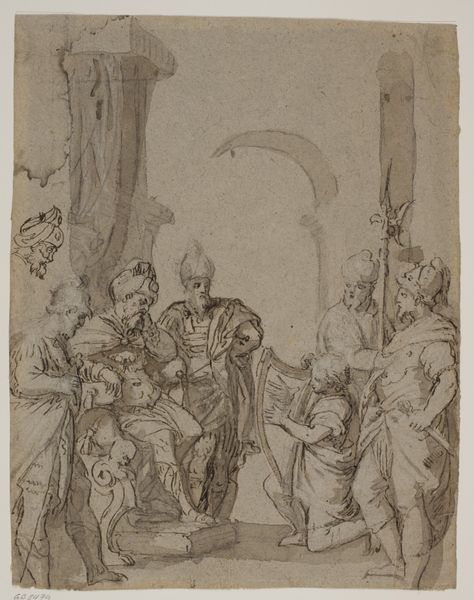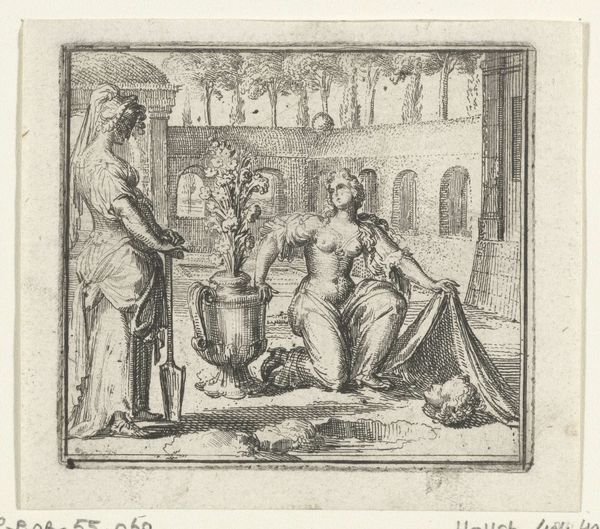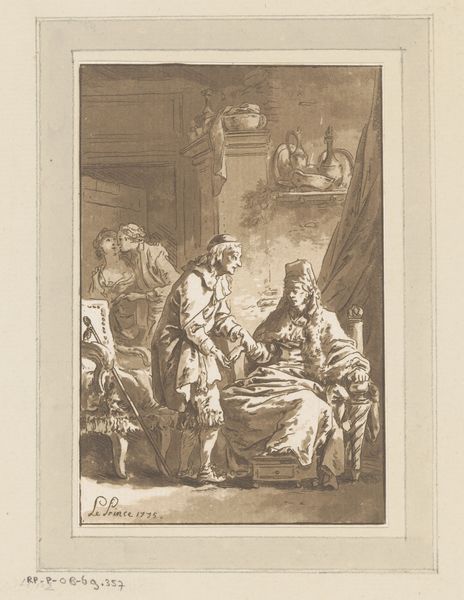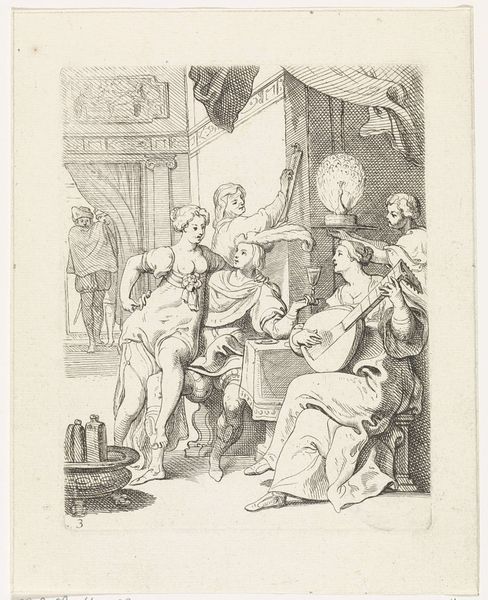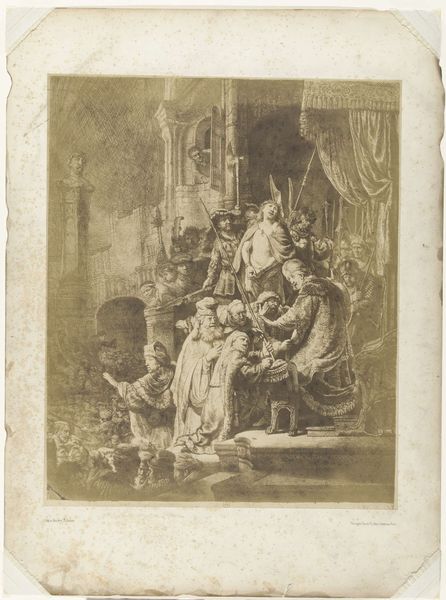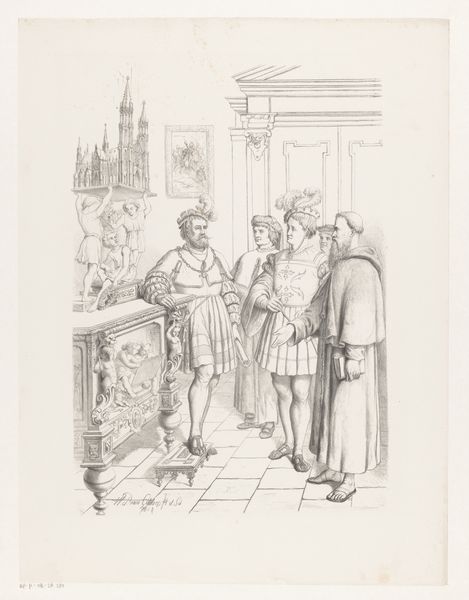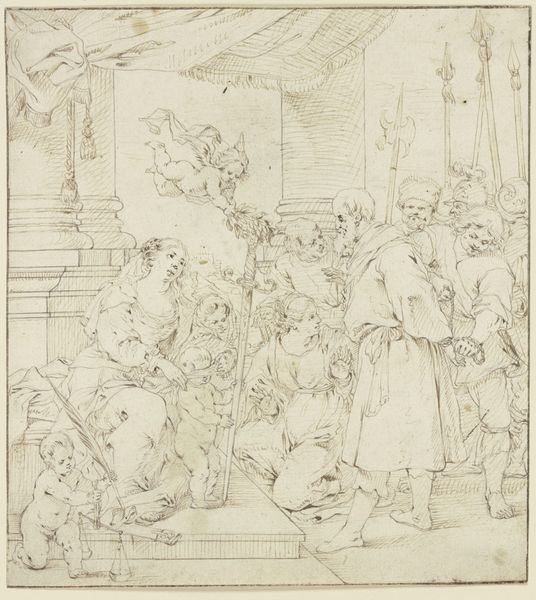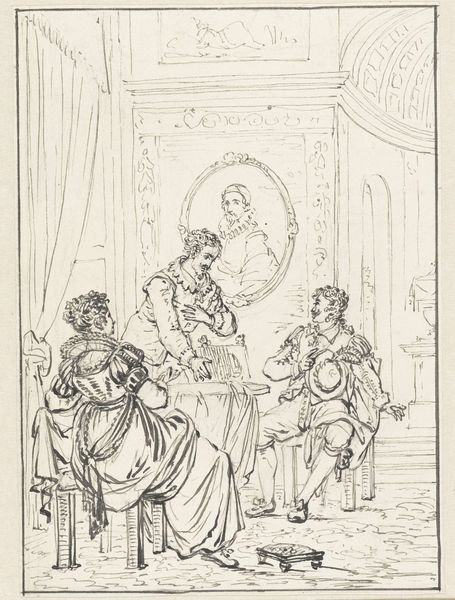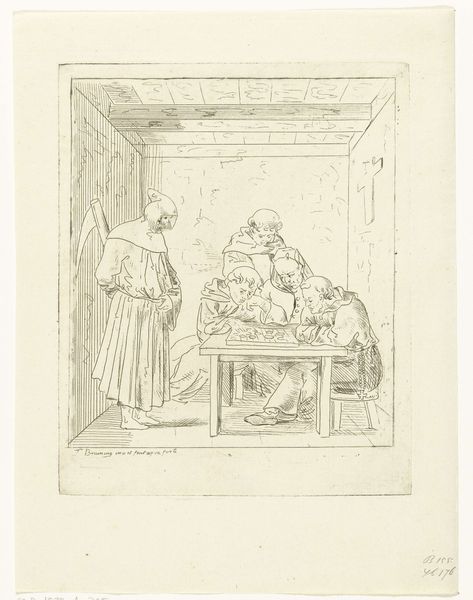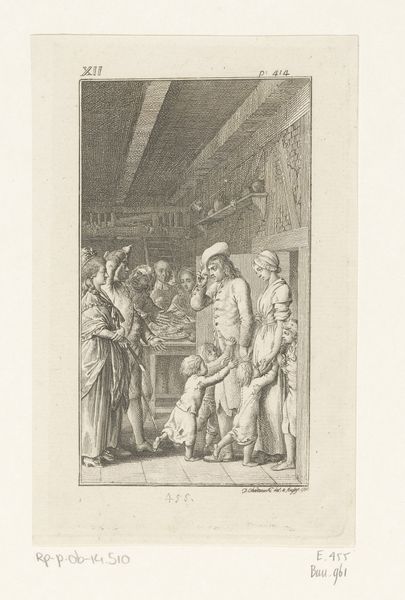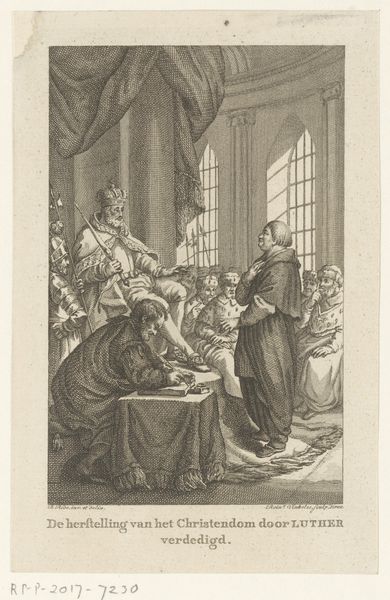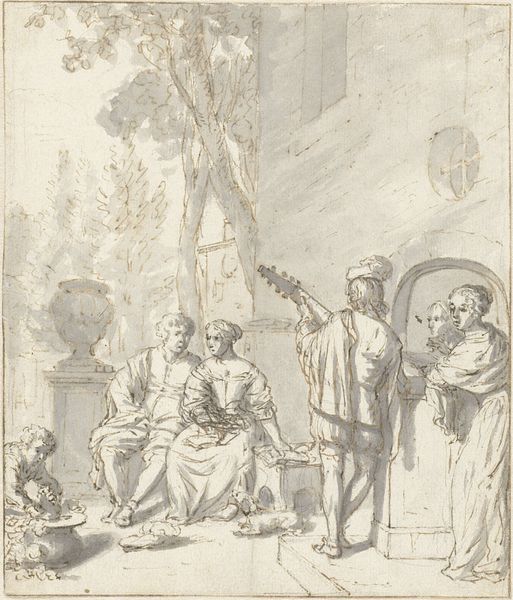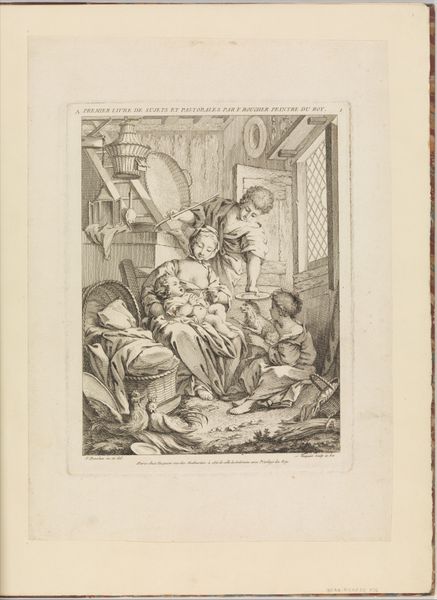
drawing, paper, ink, pencil
#
portrait
#
drawing
#
aged paper
#
toned paper
#
light pencil work
#
narrative-art
#
mechanical pen drawing
#
pencil sketch
#
old engraving style
#
figuration
#
paper
#
ink
#
pen-ink sketch
#
pencil
#
line
#
pen work
#
pencil work
#
genre-painting
#
northern-renaissance
#
pencil art
Dimensions: height 210 mm, width 175 mm
Copyright: Rijks Museum: Open Domain
Jan Jansz. Post's pen and wash drawing depicts a scene of a prodigal son receiving his inheritance. This artwork offers insight into the social and economic dynamics of the Dutch Golden Age. Drawn sometime before 1614, the image conveys meaning through visual codes and cultural references. The Dutch Republic was experiencing a period of unprecedented economic growth and social change. Inheritance laws and practices were central to the distribution of wealth and power within families and society. The scene captures a moment of transition, as wealth is transferred from one generation to the next. The architecture and clothing reflect the values and norms of Dutch society at the time. By examining archival documents, legal records, and social histories, we can gain a deeper understanding of the artwork. Art history relies on interdisciplinary approaches to understand art as a product of social, cultural, and institutional forces. The meaning of art is always contingent on its historical and social context.
Comments
No comments
Be the first to comment and join the conversation on the ultimate creative platform.
